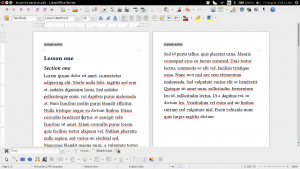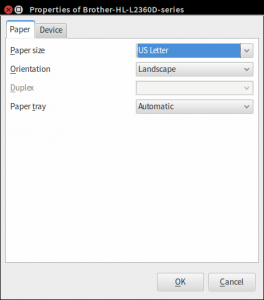After much trial and error, I have come up with this method of printing a service or sermon text to be put in a small binder for use in worsip, using free and open source software. And I thought it was worth sharing with you.
First you will need to download the LibreOffice office suite; a version 5.0 has just been released but I use 4.2.8.2, so I’m just hoping there’s not much of an apparent difference.
Also, ideally the Linux Libertine Graphite type face. (That typeface is free to use and share, and has features that I will describe later.)
You will also need a half sized binder (like this one) and page protectors.
The trick is composing half-sized pages and then letting the office suite compose those pages on to full size pieces of paper.
 Here’s a sample of the service typed out.
Here’s a sample of the service typed out.
When you go to print, click the Properties box on the General tab, and then set the paper to print Landscape. This is what it looks like with my printer.
Here’s the trick: check “Use only paper size from paper preferences.”

Then change the layout to print two pages side by side. Extra points to those who can figure out how to print a booklet or brochure, in which case a saddle stapler is a help.

Then print, fold, slip into the protectors and then into the binder.
Download the file I used in this lesson here, or click here for a Google Doc that does essentially the same thing (with the Gentium font) for you to copy and modify as you will.
I would appreciate feedback if you use either source.







